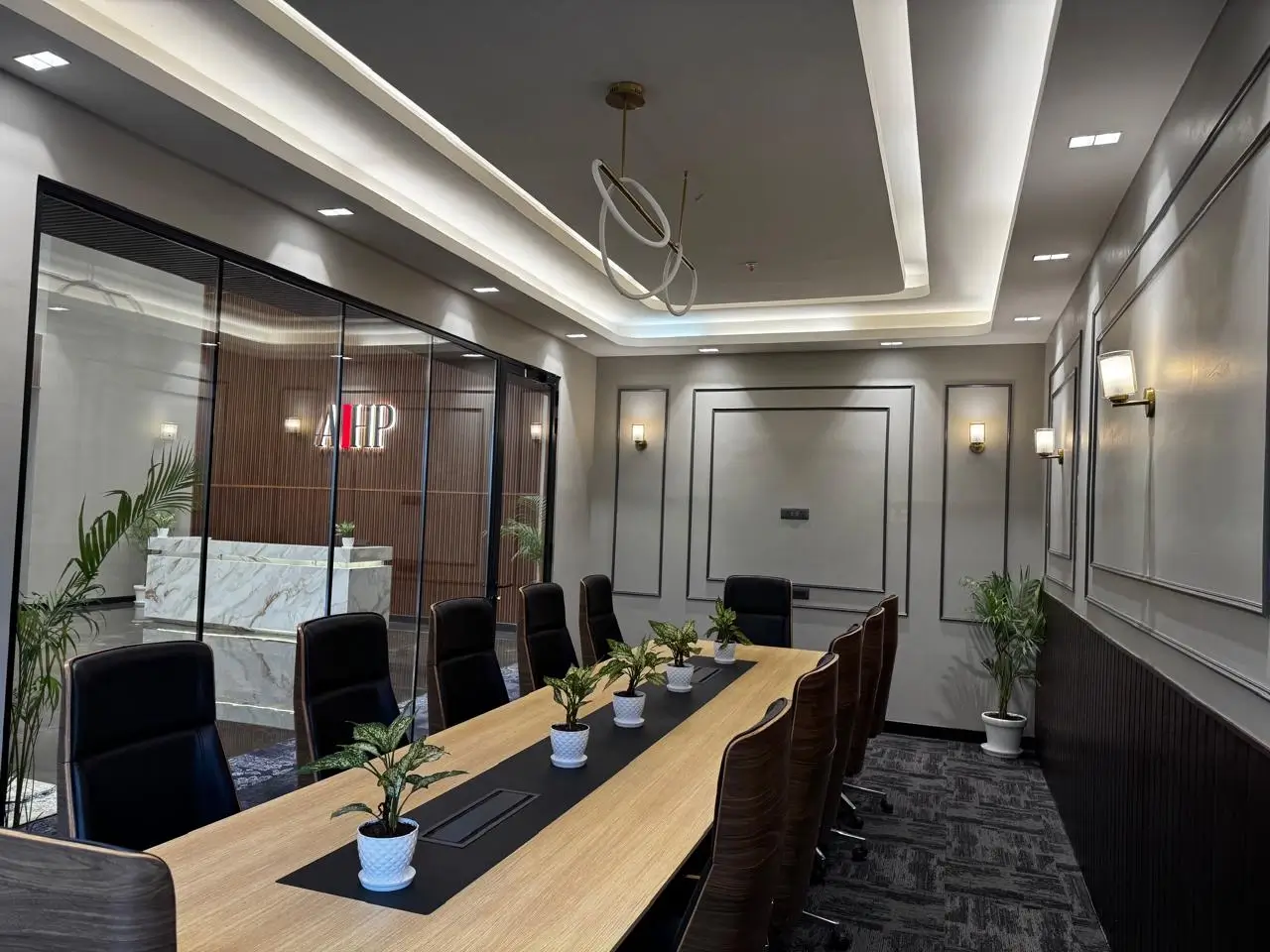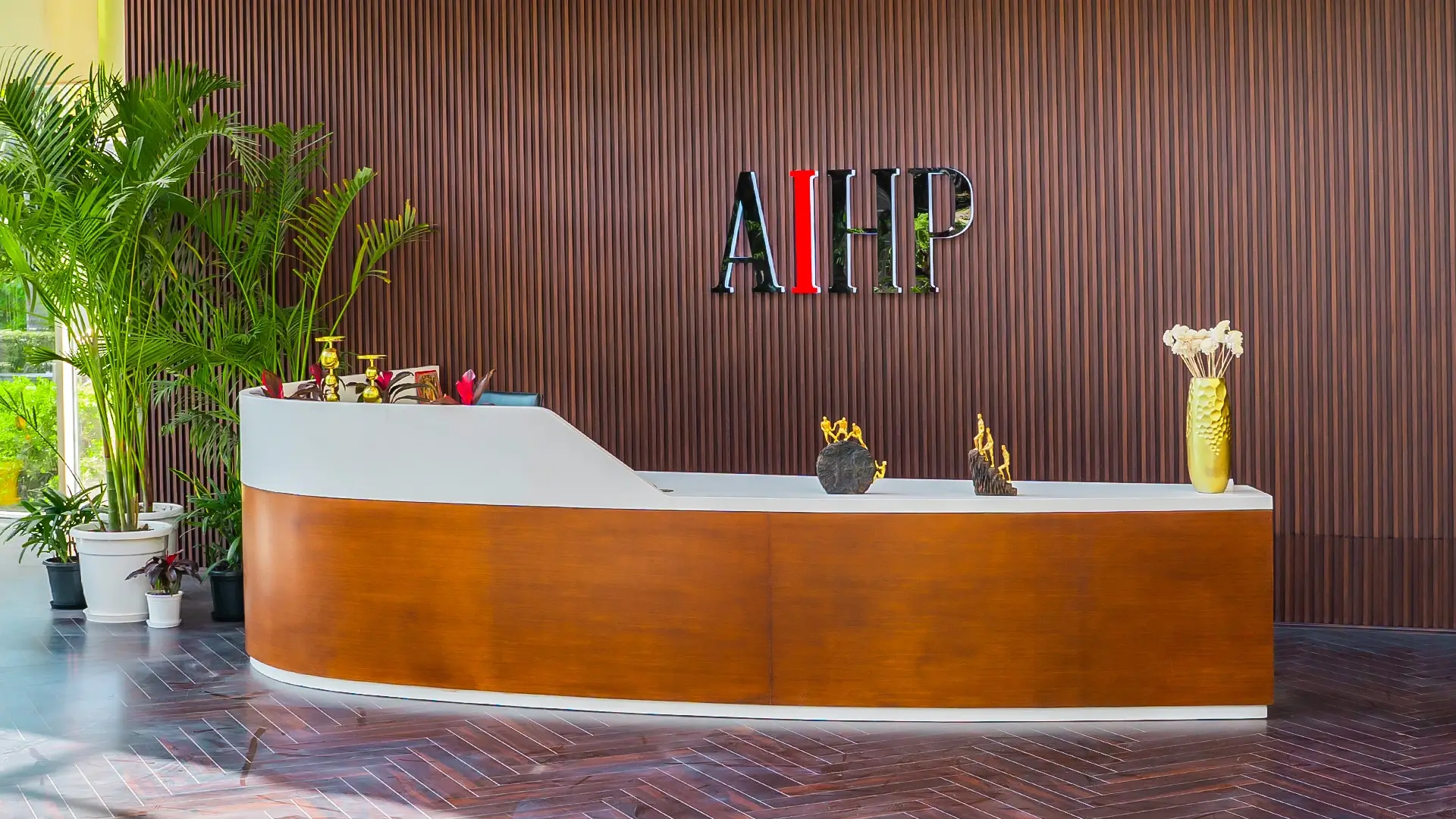In a fast-changing corporate world, office design plays a crucial role in shaping employee well-being, engagement, and productivity. AIHP’s Favorite Office Design Trends of the Year highlight how thoughtfully designed workspaces can drive innovation, support hybrid work, and create a lasting impact on company culture. Projects like AIHP Palms, AIHP Millennium, and AIHP Skyline exemplify the practical execution of these emerging trends.
The Rise of Biophilic Office Design
Bringing Nature Indoors
A defining theme this year is biophilic design, which brings natural elements into the workplace to improve well-being and cognitive performance. Offices are increasingly featuring:
- Indoor greenery and vertical plant installations
- Natural lighting and floor-to-ceiling windows
- Organic materials such as wood, stone, and bamboo
According to research on biophilic environments, such features are proven to reduce stress and enhance mental clarity. AIHP prioritizes these elements in properties like AIHP Palms, where lush landscaping and open air zones offer a tranquil work setting.

Embracing Flexible Workspaces
Adaptability Is Key
Today’s offices must accommodate both collaboration and solo work. AIHP’s approach to flexible design includes:
- Modular, movable furniture
- Multi-purpose common areas
- Focus zones for deep work
These strategies align with the rising demand for flexible layouts driven by the hybrid work model. A recent study on the evolution of workplace design confirms that adaptable environments foster creativity and increase overall productivity. AIHP Millennium is a prime example, offering spaces that fluidly adapt to changing team needs.
Trending Office Design Elements
Ergonomic Furniture
With employees spending long hours at desks, ergonomic design is essential. AIHP integrates:
- Adjustable chairs and sit-stand desks
- Workstations with user-friendly layouts
- Designs that support spinal health and posture
Ergonomic furniture isn’t just about comfort—it’s directly linked to reduced injury and improved focus. Occupational health guidelines reinforce the importance of ergonomics in preventing work-related strain.
Sustainable Materials
Sustainability is not just a trend—it’s a commitment. AIHP incorporates:
- Recycled and eco-conscious materials
- Energy-efficient lighting systems
- Low-VOC paints and finishes
Offices like AIHP Skyline are designed with environmental responsibility in mind, reducing the carbon footprint while enhancing indoor air quality. For a closer look at the benefits of green interiors, this environmental impact study on sustainable design offers valuable insights.
Technology Integration
Modern office spaces are increasingly dependent on seamless tech. AIHP focuses on:
- Smart meeting rooms equipped for remote collaboration
- Wireless charging stations and smart desks
- Automated lighting and climate controls
These elements ensure convenience while supporting a digitally forward work culture. All of this aligns with AIHP’s mission to deliver future-ready office spaces across Gurgaon. You can learn more about their approach at aihp.in.

Conclusion
The evolving workplace calls for thoughtful, strategic design. AIHP’s Favorite Office Design Trends of the Year reflect a balanced focus on well-being, sustainability, flexibility, and innovation. By embracing these principles, AIHP continues to lead the transformation of workspaces into environments that inspire and perform.
Whether you’re planning a new office or revamping an existing one, these trends offer a clear direction. The execution seen at AIHP Palms, AIHP Millennium, and AIHP Skyline illustrates how forward-thinking design can meet today’s business and employee expectations alike.
Frequently Asked Questions (FAQs)
Biophilic office design integrates natural elements—like plants, natural lighting, and organic textures—into indoor work environments. It’s trending because it improves employee mood, focus, and overall productivity.
Flexible workspaces allow teams to adapt layouts to their tasks—whether it’s group collaboration or solo focus. This adaptability improves workflow and supports hybrid work models effectively.
Ergonomic furniture promotes good posture, reduces physical strain, and prevents long-term health issues, contributing to better employee performance and satisfaction.
Sustainable materials include recycled wood, bamboo, low-VOC paints, and energy-efficient lighting systems. They help reduce environmental impact while improving indoor health.
Smart systems—like automated lighting, wireless charging, and advanced video conferencing—streamline daily operations and support seamless collaboration, both onsite and remotely.



